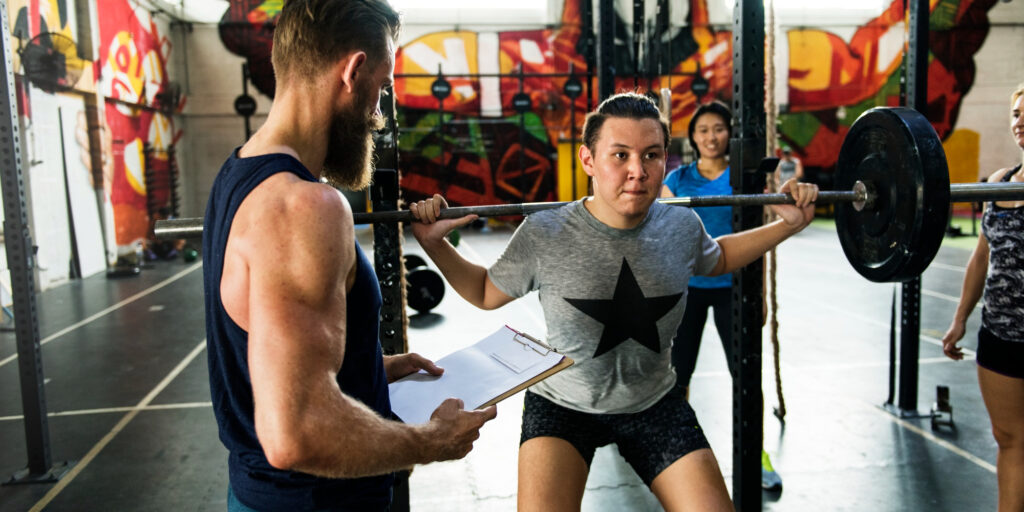Gym Safety and Workout Precautions
The recent tragic death of Yashtika, a 17-year-old powerlifting gold medallist from Rajasthan’s Bikaner district, has once again highlighted the crucial need for gym safety and proper training precautions. She lost her life when a 270kg weightlifting bar fell on her neck during a training session at a gym, despite being under the supervision of her trainer.
This heart-wrenching incident raises serious concerns about safety protocols in gyms, especially for individuals engaged in high-intensity workouts like powerlifting, weightlifting, and strength training. It also underscores the importance of proper form, equipment usage, supervision, and emergency preparedness in fitness environments.
In this article, we will discuss:
✅ Common risks in gyms
✅ Why safety is often neglected
✅ How to improve gym safety
✅ Essential precautions for lifters and gym-goers
The Importance of Gym Safety
Gyms and fitness centers are designed to help people improve their strength, endurance, and overall well-being. However, without proper safety measures, they can become dangerous. Powerlifting, weight training, and even simple exercises can cause severe injuries if not done correctly.
Many people assume that injuries happen only to beginners, but even experienced athletes can suffer life-threatening accidents, as seen in Yashtika’s case. This is why strict safety measures, proper equipment, and professional supervision are non-negotiable in fitness environments.
Common Risks and Injuries in Gyms
Poor Form and Technique
- Lifting heavy weights without proper technique can strain muscles, joints, and bones.
- Exercises like squats, deadlifts, and bench presses require precise movement to prevent injuries.
Lack of Proper Supervision
- A personal trainer or spotter should always be present when lifting heavy weights.
- Even experienced athletes need guidance to prevent dangerous mishaps.
Overloading the Body
- Pushing beyond one’s limit without proper warm-ups and progression can cause muscle tears, fractures, and spine injuries.
- Progressive overload should be implemented gradually and systematically.
Ignoring Safety Equipment
- Using lifting belts, wrist wraps, knee sleeves, and proper footwear enhances stability and reduces injury risks.
- Many lifters neglect these essentials, increasing the chances of accidents.
Poorly Maintained Gym Equipment
- Faulty gym machines, worn-out barbells, and unstable weights can lead to severe injuries.
- Regular maintenance and inspections are necessary to ensure safety.
Lack of Emergency Response Plans
- Accidents can happen within seconds, and CPR and first-aid knowledge can save lives.
- Most gyms do not train staff adequately for emergencies.
Why Safety is Often Neglected in Gyms?
Despite the risks, many gyms do not implement strong safety protocols. Some reasons for this include:
✅ Lack of Awareness – Many gym-goers and even trainers fail to recognize the importance of proper technique and safety measures.
✅ Competitive Mindset – Athletes often push themselves too hard to break personal records or outperform others, leading to overexertion and injuries.
✅ Inexperienced Trainers – Some gyms hire underqualified trainers who lack expertise in advanced workouts like powerlifting or Olympic lifting.
✅ Lack of Spotters – Many lifters train alone or without a spotter, increasing the risk of serious accidents.
✅ No Safety Guidelines – Unlike international gyms, many local fitness centers do not enforce strict safety rules, making injuries more common.
How We Can Improve Gym Safety?
To prevent tragic incidents like Yashtika’s, gyms, trainers, and lifters must take responsibility for safety. Here’s what can be done:
1. Gym Management Responsibility
- Conduct safety audits to ensure all equipment is in proper working condition.
- Implement emergency response training for trainers and staff.
- Install safety bars and catch racks in weightlifting areas.
- Ensure qualified trainers are available, especially for heavy lifting.
2. Trainers’ Responsibility
- Train athletes in proper form and technique before progressing to heavier weights.
- Be physically present and attentive when lifters attempt heavy lifts.
- Use spotting techniques to prevent injuries.
- Encourage lifters to use safety gear like belts and knee sleeves.
3. Lifters’ Responsibility
- Never lift beyond your capacity without proper guidance.
- Always warm up properly before attempting heavy lifts.
- Use a spotter or support equipment when lifting heavy.
- Listen to your body – if you feel pain or discomfort, stop immediately.
4. Emergency Preparedness
- Every gym should have trained first responders.
- CPR and first aid kits should be readily available.
- Emergency protocols should be practiced regularly.
Essential Safety Precautions for Gym-Goers
Always Use a Spotter – If you’re lifting heavy, never do it alone. A spotter can help stabilize the weight in case of imbalance.
Master the Basics First – Before lifting heavy, perfect your form and technique under professional guidance.
Wear Proper Safety Gear – Lifting belts, knee sleeves, wrist wraps, and proper shoes can enhance stability and prevent injuries.
Listen to Your Body – Avoid overexertion and gradually increase your strength.
Stay Alert and Aware – Accidents can happen in seconds, so stay focused while working out.
Know Your Limits – Never attempt extreme lifts without proper progression and supervision.
Conclusion: A Call for Stronger Gym Safety Measures
The tragic incident involving Yashtika is a wake-up call for gyms, trainers, and athletes to prioritize safety above everything else. Powerlifting, bodybuilding, and strength training can be incredibly rewarding, but only when performed with proper precautions and professional guidance.
It’s time for gyms in India and worldwide to step up their safety protocols, ensuring that no athlete loses their life due to preventable accidents.
✅ For gym owners – Install better safety measures, train your staff, and ensure all lifters are aware of safety protocols.
✅ For trainers – Be vigilant, well-trained, and proactive in preventing accidents.
✅ For lifters – Prioritize technique over ego, safety over competition, and long-term health over short-term goals.
By learning from this tragedy, we can ensure a safer fitness environment for everyone. Let’s work together to prevent another loss like Yashtika’s and create a culture of safe and responsible training.





